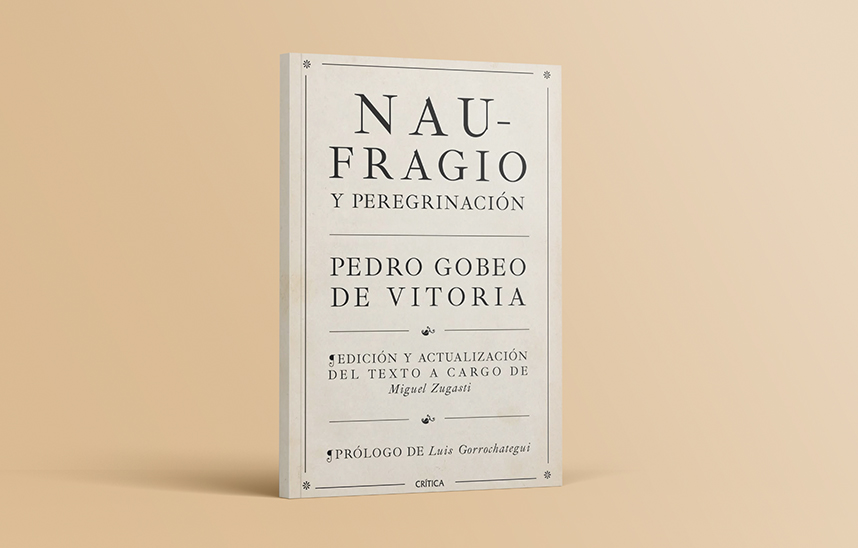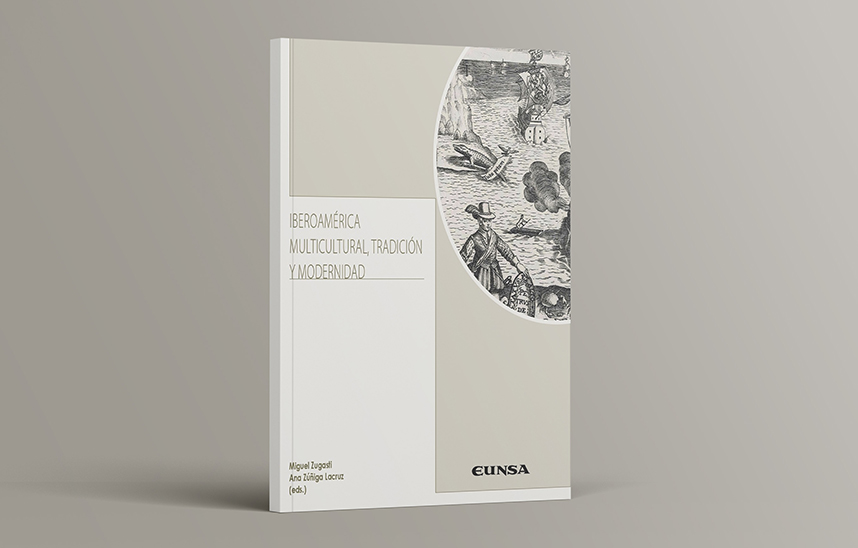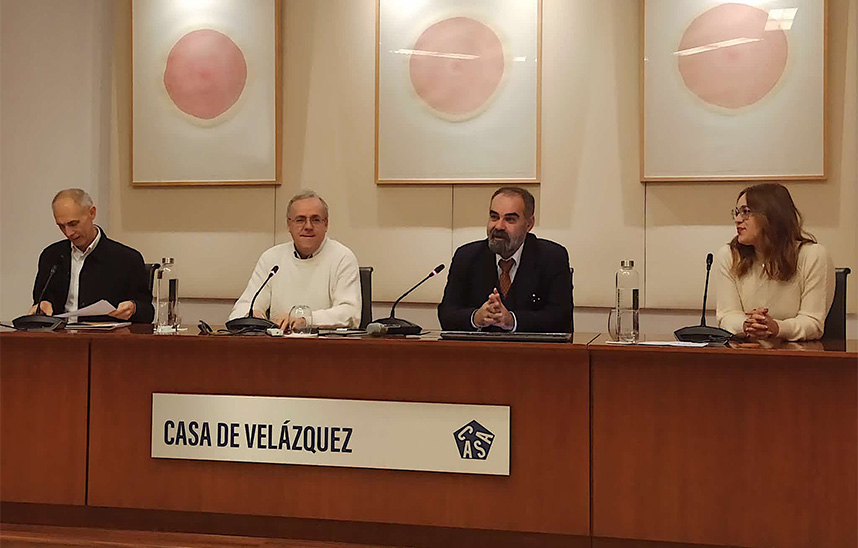Miguel Zugasti, Full Professor of Literature of the School of Philosophy and Letters, recovers the chronicles of the shipwreck of Pedro Gobeo de Vitoria, Spanish explorer.
Only one copy of his work "Shipwreck and Pilgrimage" is preserved in the world.

In 1593, an expedition that left Seville for the Americas ended up shipwrecked on the shores of the Pacific. Among the survivors was a young boy, barely 13 years old, named Pedro Gobeo de Vitoria, who had joined the crew out of a desire for adventure and enrichment in those distant lands.
The hardships experienced during his 800-1000 kilometers walk along the dangerous coast of Esmeraldas (present-day Ecuador) were immortalized in his autobiographical work "Shipwreck and Pilgrimage", published in 1610.
More than 400 years later, and by the hand of the publishing house Crítica (group Planeta), Miguel Zugasti, Full Professor of Literature of the Golden Age of the School of Philosophy and Letters of the University of Navarra, has republished this book, of which only one copy is preserved in the world, specifically, at the University of Mannheim (Germany).
Q. How and when did you hear about the existence of this work at knowledge ?
R. The finding of this unique copy is due to the expertise of Raúl Manchón Gómez, a colleague at the University of Jaén who made it known in an academic publication in 2004. At that time I was researching another great traveler of the Golden Age, a certain Pedro Ordóñez de Ceballos, who was from Jaén and who also interested Raúl. We both exchanged unpublished information and news by e-mail, but we never met in person. The direct contact came in August 2011, when I invited him to Pamplona to a summer course that I directed graduate "Yesterday and today of travel literature", where he spoke to us about the shipwreck and pilgrimage of Pedro Gobeo de Vitoria.
Years later, in the middle of the pandemic, Raul phoned me and invited me, almost begged me, to take up the matter, which was becoming barren. He is a Latinist and the book was out of his specialization program, so he was looking for a Hispanist willing to go deeply into the author and the work, which required several years of exhaustive research. I thought about it for a week and told him to go ahead with the lanterns. So, full and mutual satisfaction, since we have reached a safe harbor without running aground.
Q. Why did you consider reissuing it?
R. I am a Hispanist philologist by official document and vocation. It is not enough for a handful of specialists to know the contents of the book; we have to make sure that this story reaches a wider audience, readers not versed in golden letters; we have to try to capture our young people and attract their attention. To the latter I say: if you like the "Pirates of the Caribbean" movies so much, here you have a historical and Hispanic adventure that surpasses it, totally ours, without having to buy it from Hollywood scriptwriters (and I love Hollywood movies).
Editing and publishing the text is a necessary requirement to achieve such a goal. So I prepared the philological and academic edition of "Naufragio y peregrinación" and offered it to publishing house Crítica, an imprint of group Planeta, which works on essay and "non-fiction". The editor, Carmen Esteban Escalante, sent me the challenge to update the text, increase its readability Degree and bring it a little closer to the horizon of expectations of a 21st century reader. I had never done such a thing, but I accepted the challenge and I confess that I liked the result.
Q. What relevance does a work like this have in history and literature?
R. Very much so. First, because it is a bibliographic rescue of enormous magnitude: now we have at our fingertips a text and an author that have been relegated to silence for more than four centuries. The histories of literature that will be written from today onwards will echo this finding. The book fully enters into testimonial or autobiographical writings, travel accounts, chronicles of the Indies... It belongs to all these fields of historiography and to some others, such as the narrative of failure and misfortune.
We had a bunch of related cases referred by Fernández de Oviedo, by Father Acosta (he speaks of Bartolomé Lorenzo), or by the Inca Garcilaso (quotation to Pedro Serrano), but above all we had the impressive shipwreck of Álvar Núñez Cabeza de Vaca, from the middle of the 16th century. Now we have a second shipwreck, that of Pedro Gobeo, from the end of the 16th century, which is aligned with his predecessor. And they go hand in hand because both adventures are examples of resilience in the face of difficulties and overcoming them, of blind faith in divine providence, of survival instinct. They are timeless values that serve for any reader of any era.
Q. To whom is the reissued version of "Shipwreck and Pilgrimage" addressed?
R. To good readers, to lovers of history and adventure, to young people looking for entertaining texts, and also to specialists in classical literature with an open mind (there is life beyond Don Quixote). All of them have at their disposal here a novel, stimulating text that will not leave them indifferent. Also, the text incorporates a battery of explanatory notes, in two levels of depth, which allow several ways of reading: you can read the page without paying attention to the notes and focusing on the adventure (what happens), or you can also read the notes and access a greater Degree of skill reader. Everyone will choose the option that suits him or her best.
P. Of all that Pedro Gobeo has narrated, what has struck you the most? Have you discovered any curiosity, fact or anecdote that you were unaware of until now?
R. There are dozens of anecdotes that catch the reader's attention: the courage of a thirteen-year-old boy who takes the world by storm and sets out alone on an adventure; the attacks of the dreaded corsairs; the hardships of hunger, so intense that it drives them to eat live crabs, without stopping to roast them, and the same happens with a snake that they catch and eat raw; the cultural shock with the blacks and mulattoes of the Esmeraldas coast, whose faces full of piercings and adornments frighten and frighten them (they imagine that they are devils, but then it turns out that they save them from drowning); the wandering through unknown land without knowing where they are or how far they are from their destination; the pain of seeing how their companions are disappearing due to the harshness of the journey (60% of the castaways die); the imminence of death, choosing a shroud and digging their own grave; in short, a thousand things of this tenor.
However, what is most striking is his unwavering faith in divine providence, the acceptance of the destiny marked by God, which does not imply passively abandoning oneself to fate, but rather refining the instinct for survival, asking heaven for financial aid and fighting hard to avoid the clutches of death.
I would also like to highlight a feature of the collective mentality of the time. I am referring to the feeling of belonging to a nation and an empire, an idea for which they are willing to give their lives. Faced with the imminence of a battle against the Scottish corsair, a Spanish general named Pedro de Acuña harangues his men, telling them that they must fight until the last drop of blood is shed, for there is no greater honor and glory than to fight for the fame and freedom of the homeland.
Q. Are there any issues that we have not discussed that you would like to comment on?
R. I would like to point out how two stories are perfectly intertwined in one, both equally exciting. I am referring, on the one hand, to the vicissitudes and human adventure of Pedro Gobeo and his companions in misfortune; and, on the other hand, to the physical evolution of the original published in 1610.
It is documented that the book circulated in the seventeenth century in European and American countries, but then strangely fell into oblivion and volumes were lost, reaching the extreme case that we have barely preserved a single copy in the world, the minimum necessary to reconstruct the text.
All this is very filmy and in my head I am already building a script with flashback effect that embraces both sides of the story. Here lies a potential road movie genre film, which I would shoot in core topic of epic odyssey and in authentic scenarios, without virtual tricks. Since this "Shipwreck and Pilgrimage" has been resurrected with such a good star, I am convinced that sooner rather than later this film will become a reality.




